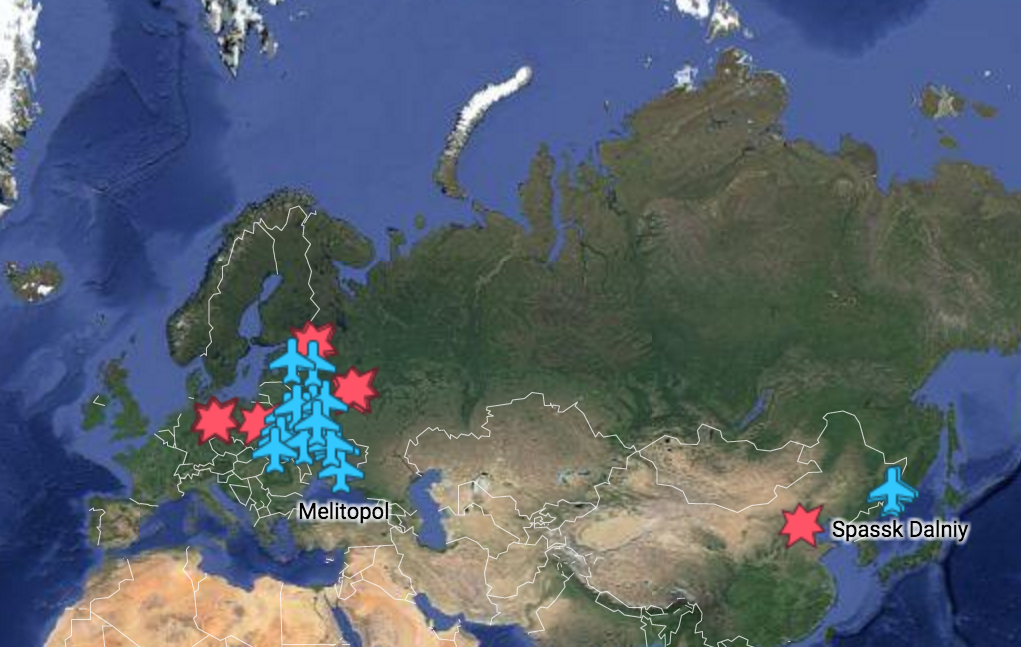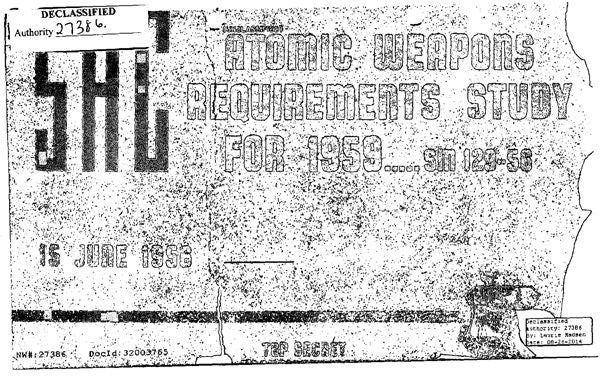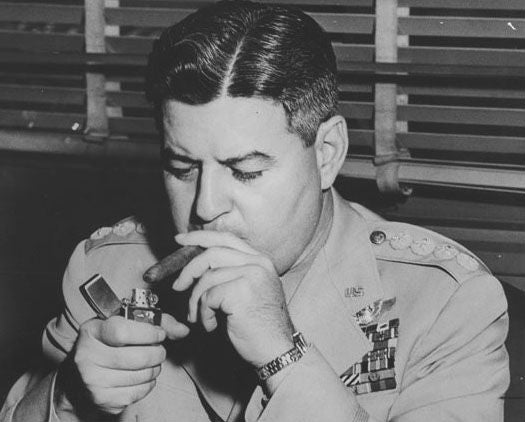US intended to destroy civilian populations in enemy cities during Cold War according to declassified target list
The document was prepared in the summer of 1956 and made available this week

Your support helps us to tell the story
From reproductive rights to climate change to Big Tech, The Independent is on the ground when the story is developing. Whether it's investigating the financials of Elon Musk's pro-Trump PAC or producing our latest documentary, 'The A Word', which shines a light on the American women fighting for reproductive rights, we know how important it is to parse out the facts from the messaging.
At such a critical moment in US history, we need reporters on the ground. Your donation allows us to keep sending journalists to speak to both sides of the story.
The Independent is trusted by Americans across the entire political spectrum. And unlike many other quality news outlets, we choose not to lock Americans out of our reporting and analysis with paywalls. We believe quality journalism should be available to everyone, paid for by those who can afford it.
Your support makes all the difference.First came Moscow and Leningrad, with more than 300 targeted sites or Designated Ground Zeros (DGZs), in those two cities alone.
Then there was Warsaw and Beijing, and an astonishing 1,200 other cities.
This was the list of targets drawn up “systematic destruction” by US nuclear strikes at the height of the Cold War for nuclear strikes, and declassified more than fifty years later.

The list reveals that the priority for any operation launched by the US was airfields and installations, as they wanted to be able to destroy any chance the Soviet Union had of itself attacking America.
But included in each city are specific areas - a detail that to this day remains classified - that the US intended to target because of their dense human populations. This tactic was apparently at odds with international rules of war that prohibit specific targeting of civilians.
The 700-page document, Strategic Air Command (SAC) Atomic Weapons Requirements Study for 1959, was produced in the summer of 1956 and made available this week by the National Security Archive, located at George Washington University in Washington DC.
At the time the document was prepared, General Curtis LeMay was Commander-in-chief of the Strategic Air Command.

Scholars who published the document said they believed it was the most comprehensive Cold War nuclear target list ever to be made public.
“One of the most interesting things is the amount of minute detail,” senior analyst William Burr told The Independent.
“The priority was installations. But there were also target areas of human population. We still don’t know precisely where….But it is chilling.”
The document says that the nuclear bombing operations would expose nearby civilians and “friendly forces and people” to high levels of deadly radioactive fallout.
Moreover, the authors developed a plan for the “systematic destruction” of Soviet bloc urban-industrial targets that specifically and explicitly targeted “population” in all cities, including Beijing, Moscow, Leningrad, East Berlin, and Warsaw.
Mr Burr wrote in a press release that the prioritisation of Soviet air power was based on the apparent immediate threat that Soviet bombers posed to the continental United States and to US forces in Europe and East Asia”
“The report’s detailed introduction explained that the priority given to air power targets dictated the surface bursting of high-yield thermonuclear weapons to destroy priority targets, including airbases in Eastern Europe,” he said.
“That tactic would produce large amounts of radioactive fallout compared to bursting weapons in the air. According to the study, “the requirement to win the Air Battle is paramount to all other considerations”.”
Join our commenting forum
Join thought-provoking conversations, follow other Independent readers and see their replies
Comments